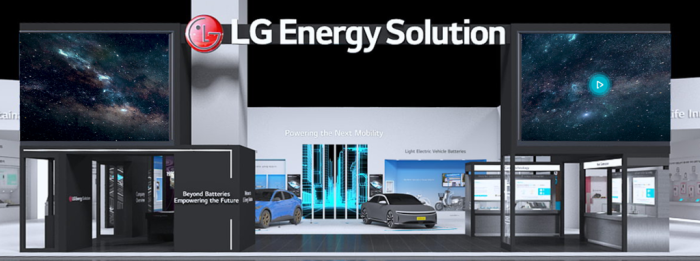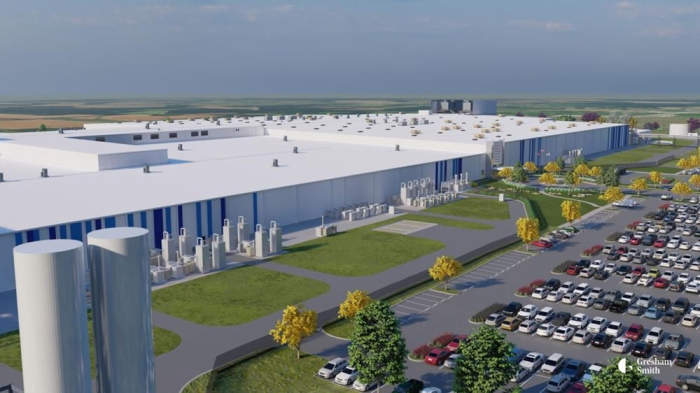Earnings
Disappointing LG Energy earnings dim outlook amid weak EVs
Sluggish global EV sales and automakers’ requests to share US tax benefits are likely to pressure LG Energy’s earnings
By Jan 09, 2024 (Gmt+09:00)
3
Min read
Most Read
LG Chem to sell water filter business to Glenwood PE for $692 million


KT&G eyes overseas M&A after rejecting activist fund's offer


Kyobo Life poised to buy Japan’s SBI Group-owned savings bank


StockX in merger talks with Naver’s online reseller Kream


Meritz backs half of ex-manager’s $210 mn hedge fund



LG Energy Solution Ltd., the world’s second-largest battery maker, disappointed investors with quarterly earnings on the sluggish global electric vehicle market and lower selling prices amid tumbling raw material costs, adding to concerns over the weakening cell industry.
LG Energy said on Tuesday its preliminary operating profit rose 42.5% to 338.2 billion won ($257.2 million) on a consolidated basis in the fourth quarter from a year earlier although sales dipped 6.3% to 8 trillion won.
The company had been expected to report an operating profit of 587.7 billion won during the October-December 2023 period and sales of 8.5 trillion won, according to a local financial market tracker FnGuide Inc.
Earnings for the battery supplier of the global EV giant Tesla Inc. are unlikely to improve in the near term as the clean automobiles' sales remain sluggish and benefits of US tax benefits are likely to shrink, analysts said.
“It will be difficult to see an earnings’ rebound by the first and second quarters, the usual off-season of EV sales,” said Lee Yong-wook, an analyst at Hanwha Investment & Securities Co.
“It should be also noted that automakers intensified pressure on battery makers to share the AMPC,” Lee said, referring to the US advanced manufacturing production credit.
AMPC
Last year, the leading US automaker General Motor Co. asked LG Energy to share up to 85% of the credits the South Korean company receives through their 50:50 battery joint venture Ultium Cells LLC in the form of dividends, The Korea Economic Daily exclusively reported.
Under the AMPC program, eligible battery makers can receive tax benefits, including a $35 tax credit per 1 kilowatt-hour produced by a battery cell and a $10 tax credit per 1 kWh battery module manufactured in North America. The program is expected to help LG Energy add billions of dollars in annual profits.
LG Energy collected an estimated 676.8 billion won in the benefits last year, about 31.3% of its total operating profit.
In the fourth quarter, the company earned 250.1 billion won from the AMPC program, shrinking its operating profit excluding the credits to 88.1 billion won with an operating profit margin of 1.1%.
That compared with the previous three months when the company logged a record profit of 731.2 billion won. Excluding the AMPC contribution, its third-quarter operating profit reached 515.7 billion won with an operating profit margin of 6.3%.
“(Sluggish) EV sales affected the earnings,” said a company official when asked about the weaker sales and profit in the fourth quarter compared to those for the third.
HEYDAY OVER?
LG Energy is unlikely to enjoy as healthy earnings in the near term as those of last year when its operating profit surged 78.2% to an all-time high of 2.2 trillion won with sales up 31.8% to 33.7 trillion won, industry sources said.
The company plans to focus on qualitative growth and improve competitiveness.
The firm aims to advance the quality and production process of all product portfolios including Nickel Manganese Cobalt Aluminum (NMCA) batteries for premium EVs and lithium iron phosphate (LFP) models for lower-end eco-friendly cars. It will also increase battery energy density and cut manufacturing costs through process efficiency.
Joint battery plants such as one with Hyundai Motor Co. in Indonesia and another with GM in Tennessee scheduled to start operations in the first half are expected to improve LG Energy’s earnings, industry sources in Seoul said.

“The recent industry slump due to sluggish EV demand on the global economic slowdown is temporary,” said one of the sources. “Companies such as LG Energy, which secured advanced technology and solid global production bases will be able to use the downturn as a chance to further strengthen their competitiveness.”
Write to Jin-Won Kim at jin1@hankyung.com
Jongwoo Cheon edited this article.
More to Read
-
 BatteriesGM asks LG Energy to share huge portion of US EV tax benefits
BatteriesGM asks LG Energy to share huge portion of US EV tax benefitsNov 30, 2023 (Gmt+09:00)
4 Min read -
 EarningsLG Energy Q3 profit at record high on gains from US battery tax credit
EarningsLG Energy Q3 profit at record high on gains from US battery tax creditOct 11, 2023 (Gmt+09:00)
3 Min read -
 BatteriesLG Energy, GM to inject another $275 mn in Tennessee plant
BatteriesLG Energy, GM to inject another $275 mn in Tennessee plantDec 04, 2022 (Gmt+09:00)
1 Min read -
 BatteriesHyundai, LG Energy break ground on $1.1 bn Indonesia battery plant
BatteriesHyundai, LG Energy break ground on $1.1 bn Indonesia battery plantSep 15, 2021 (Gmt+09:00)
2 Min read
Comment 0
LOG IN


